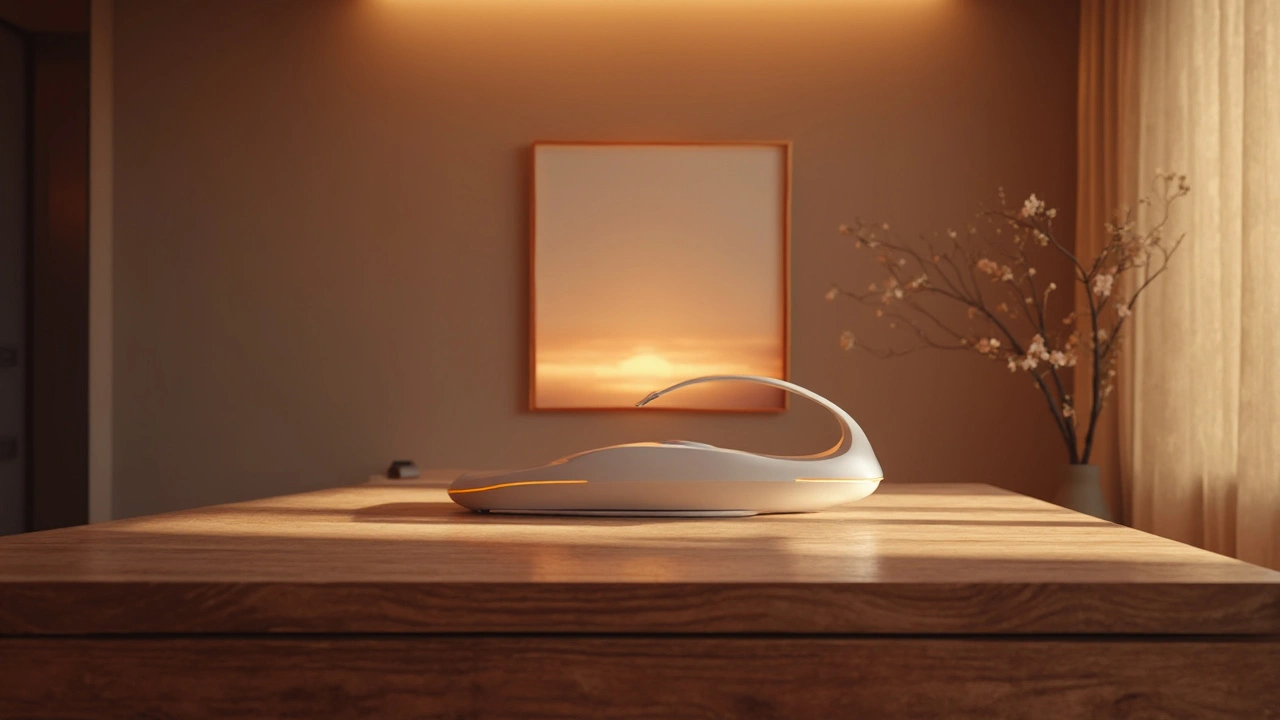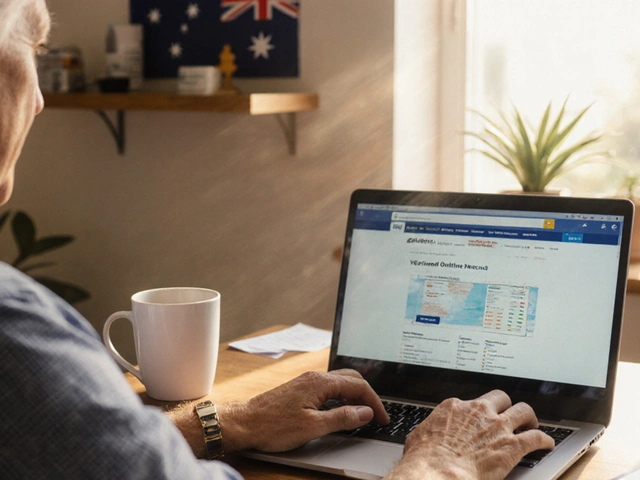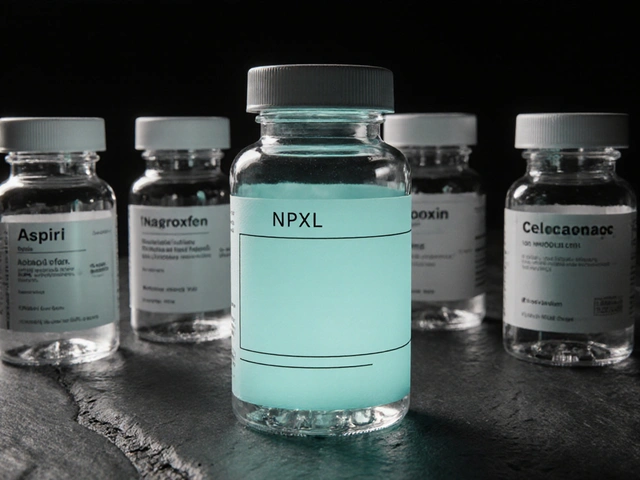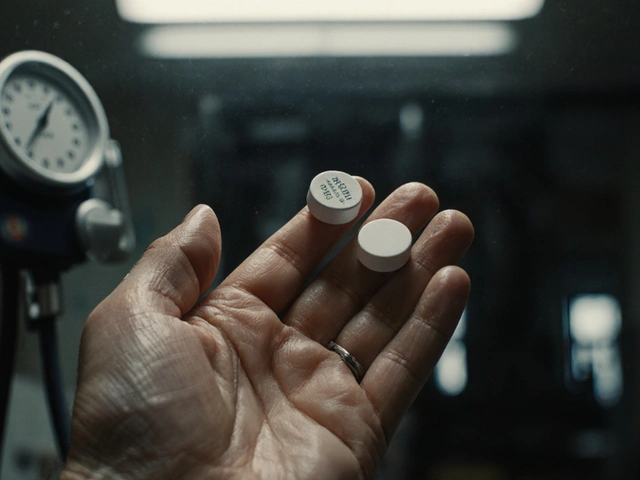Dyskinesias can be a real pain, literally and figuratively. These involuntary movements often pop up in people with certain neurological conditions, like Parkinson's disease, and they can seriously mess with your daily rhythm. But there’s hope on the horizon with biofeedback, a treatment that’s gaining attention for its potential to help tackle these frustrating movements.
So, what’s the deal with biofeedback? It’s a technique that sounds straight out of a sci-fi movie but is actually quite practical. Basically, it’s about learning to control some of your body’s processes by understanding physiological signals. Imagine training your brain to recognize when it’s about to cause one of those involuntary movements and then stopping it before it even starts. Pretty cool, right?
- What Are Dyskinesias?
- How Biofeedback Works
- Benefits of Biofeedback for Dyskinesias
- Practical Tips for Getting Started
- The Road Ahead for Biofeedback and Dyskinesias
What Are Dyskinesias?
Dyskinesias refer to those unwanted wriggly, twisty, or jerky movements you might see in someone with neurological conditions like Parkinson's disease. They’re like your body’s dance moves gone rogue—totally unasked for, yet seemingly unstoppable. These movements can range from mildly annoying to seriously disruptive, affecting anything from writing a word to sipping your morning coffee.
What causes these pesky movements? Well, it often boils down to a chemical imbalance in the brain, especially involving dopamine, a key player in controlling movements. Most commonly, dyskinesias rear their head as a side effect of long-term use of medications like levodopa, which is widely used to manage Parkinson's symptoms.
Types and Characteristics
There’s quite a variety when it comes to dyskinesias. They can be categorized based on their specific movements and when they occur.
- Peak-dose dyskinesias: These typically happen when medication levels are at their highest in the bloodstream.
- Diphasic dyskinesias: This type tends to occur when medication levels are rising or falling.
- Off-period dystonia: While less common, this involves sustained muscle contractions and usually happens when medication effects are wearing off.
Understanding these different types is crucial because it helps tailor treatment options to better suit individual needs.
Impact on Daily Life
Living with dyskinesias can be quite a challenge. They might not be painful, but they sure can be a nuisance, making basic tasks feel like a complicated mission. It’s frustrating, but knowing more about these movements can turn down the stress notch.
How Biofeedback Works
Biofeedback is like having a conversation with your body. Imagine playing a video game where you learn how to control your heart rate or breathing simply by getting feedback from the game itself. This is essentially what biofeedback does—providing real-time data that helps you understand and control certain physiological functions.
Understanding the Basics
The idea behind biofeedback is pretty straightforward: sensors are hooked up to your body to monitor things like muscle tension, heart rate, or even brainwaves. The sensors then send signals to a device, which gives you feedback. This feedback can be in the form of visual cues, sounds, or even tactile sensations—it’s all about making you aware of what’s happening inside.
How It Helps with Dyskinesias
For people dealing with dyskinesias, biofeedback can be incredibly empowering. It teaches you to recognize those early warning signs of an impending involuntary movement. By becoming more in tune with your body's signals, you can practice intervening earlier, sometimes reducing the severity or avoiding the movement entirely.
Different Types of Biofeedback
- EEG Biofeedback (or Neurofeedback): Monitors brainwaves, helping to potentially rewire the brain's response to stress or other triggers.
- EMG Biofeedback: Focuses on muscle tension, ideal for controlling those pesky muscle spasms.
- Heart Rate Variability (HRV) Training: Teaches relaxation techniques by giving feedback on heart rhythms.
Getting started with biofeedback doesn't require a PhD in neuroscience, either. There are plenty of clinics offering sessions, and for the tech-savvy, even some gadgets you can use at home.
Quick Facts from the Field
Biofeedback isn't just a fad. Studies have shown that around 70% of individuals who undergo biofeedback therapy report improvements in managing their symptoms, including those pesky involuntary movements.

Benefits of Biofeedback for Dyskinesias
Biofeedback is not just a high-tech buzzword; it’s a practical tool with tangible benefits for those dealing with dyskinesias. The main goal here is to give individuals more control over those pesky involuntary movements.
Regaining Control
Nobody likes feeling out of control, especially when it’s about their own body. Biofeedback offers a way to dial back, if not fully control, those movements by training the brain to recognize early signals. Imagine catching yourself before you spill that cup of coffee because of an uncontrolled hand movement. That's where biofeedback can step in.
Reducing Symptoms
Studies show that it’s possible to reduce the frequency and severity of these involuntary movements with regular practice. Although it's not a magical cure, using biofeedback consistently can lead to significant improvement. Some folks find that their muscle tone improves over time, making everyday activities a tad bit easier.
Non-Invasive and Drug-Free
Unlike treatments that might involve surgery or medications with unwanted side effects, biofeedback is non-invasive and drug-free. That’s a massive plus for people who are already juggling medication schedules or dealing with side effects. It's just you, some high-tech equipment, and focused training sessions.
Customized to Your Needs
The flexibility of biofeedback is a big draw. Treatment can be customized to target specific areas prone to involuntary movements or adjust for different levels of severity. It's all about tailoring the experience to get the most benefit.
Getting the Facts Straight
Here’s a quick glance at some useful stats:
| Type of Dyskinesia | Improvement Rate |
|---|---|
| Parkinson's | Up to 30% reduction in symptoms |
| Tardive Dyskinesia | Improvement in muscle control noted in 40% of cases |
These figures show promising results, but like any treatment, individual experiences may vary. It's about finding the right balance and consistency for the best outcomes.
So, if you’re wrestling with dyskinesias and haven’t yet explored biofeedback, it might be worth giving it a shot. As always, chat with your healthcare provider about your options and see if this approach fits your lifestyle and health needs.
Practical Tips for Getting Started
Dipping your toes into the world of biofeedback might seem daunting, but getting started is simpler than it looks. The key is to take a step-by-step approach and focus on steady progress rather than immediate results.
Consult a Professional
Before you dive in, it's always smart to have a chat with a healthcare provider. They can help you understand which type of biofeedback might work best for your specific type of dyskinesias and guide you in setting realistic goals.
Start with the Right Tools
Biofeedback equipment varies, from high-tech gadgets to more straightforward sensor systems. Your choice depends on accessibility and budget. Some of the popular devices track heart rate, skin temperature, or muscle tension. Don’t rush—get familiar with using the equipment first.
Patience and Practice
Think of biofeedback as learning a new skill. It requires dedication and patience. Set aside regular time each week to practice. Document your sessions to note what works and what doesn’t.
Join a Support Group
Find others who are also exploring biofeedback for movement disorders. Online forums and local support groups can provide tips and encouragement, making the process less overwhelming.
Track Your Progress
Being consistent is crucial, but so is tracking your improvement. Note any reduction in dyskinesias and how you feel overall. Progress might be slow, but even small changes are worth celebrating.
Here’s a quick snapshot of typical biofeedback session durations:
| Session Frequency | Typical Duration |
|---|---|
| Weekly | 30-60 minutes |
| Bi-weekly | 45-90 minutes |
| Monthly | 60-120 minutes |
Remember, the road to managing dyskinesias with biofeedback may have its bumps, but many find it rewarding. Equip yourself with knowledge, be patient, and in time, you might just find a rhythm that works for you.

The Road Ahead for Biofeedback and Dyskinesias
The future of using biofeedback as a treatment for dyskinesias looks pretty promising. As technology becomes more advanced, this method is likely to become more effective and accessible. But where exactly are we headed with this?
Recent studies show that personalized biofeedback systems, which tailor the feedback to individual needs, can significantly enhance treatment outcomes. The rising trend of wearable devices that track physiologic data in real-time is paving the way for more personalized treatments.
There's also ongoing research into combining biofeedback with other therapies. Some studies suggest that coupling it with physical therapy might supercharge the effects, providing a double whammy of symptom relief. Treatment doesn't stand alone; it’s versatile, and it can be combined to maximize benefits.
Advancements in Technology
Wearable tech is getting smarter and smaller. These devices can now measure various physiological signals, such as heart rate, muscle tension, and skin temperature. This data can then be used to give immediate feedback to patients, helping them manage their symptoms better. As technology advances, we can expect these devices to become even more user-friendly and affordable.
"Biofeedback represents a leap forward in how we approach movement disorders, moving from reactive treatments to proactive self-management," says Dr. Samantha Hayes, a neurologist at the NeuroHealth Institute.
The dream is to have these devices so intuitive that they become a part of our everyday life, not much different from checking your smartphone.
Integrating Biofeedback into Daily Lives
The real trick will be integrating biofeedback into everyday life so seamlessly that it becomes like brushing your teeth—second nature. Here's a snapshot of how it might play out:
- Users have personalized apps on their phones that sync with wearable biofeedback devices.
- Daily notifications provide tips and track progress, making it easy to stay on top of symptoms.
- Integration with healthcare providers ensures continuity of care and updates treatment plans as needed.
The direction is clear—biofeedback offers a way forward. With the right tools and techniques, controlling movement disorders like dyskinesias could become much more manageable. All it takes is the blending of new tech with a strong commitment to improving life quality for those affected.






Lilly Merrill
July 18, 2025 at 11:33
This biofeedback approach sounds really intriguing. I've read a little about how it helps people monitor and adjust bodily functions consciously, but I wasn't sure how it could be applied to something like dyskinesias.
The fact that it empowers patients to regain some control over involuntary movements could be a total game-changer. Especially since traditional treatments for dyskinesias often come with a lot of side effects.
Accessibility is key though. I wonder how easy it is for average folks to actually get this kind of therapy? Are the devices or programs affordable and straightforward to use?
Also, does this work equally well for all types of dyskinesias or is it more effective for certain cases? Curious about any studies or clinical evidence behind this.
Would love to hear from anyone who has tried biofeedback for dyskinesias or a similar condition.